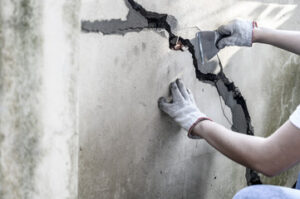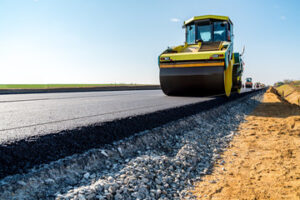The mighty Humvee has conquered foreign battlefields, suburban soccer fields and everything in between. But it has reached a crossroads.
The military replaced the HMMWV with a new model called the Joint Light Tactical Vehicle, or JLTV. It combines the HMMWV’s off-road capabilities with the MRAP’s unparalleled protection against roadside bombs. Click the https://www.streetlegalexports.com/ to learn more.

The military Humvee is a utility vehicle used to transport soldiers and gear. It is also used to carry out front-line reconnaissance patrols and serve as a mobile command post. The Humvee is made by AM General and is sold to many countries around the world. The official name is the High Mobility Multipurpose Wheeled Vehicle, but it is better known by its nickname, the Humvee. The HMMWV is a very versatile vehicle that can be adapted to meet the specific needs of its users.
The Humvee was introduced to the Military in the 1980’s and became very popular as a utility vehicle due to its ability to traverse rugged terrain and hostile environments. The HMMWV was used heavily in the Gulf War and the Iraq War, as well as several other conflicts.
One of the main issues with the HMMWV was that it did not offer much protection for its occupants. Roadside bombs and small arms fire were causing high casualties among soldiers manning the vehicles. The aluminum body of a standard HMMWV could not stop a 7.62 bullet from an AK-47, so extra armor was added to the Humvees.
Although the Humvee has been in service for over forty years, it is still being used in the field. This is due in part to the fact that the military is notoriously slow when it comes to implementing new technology. The Humvee has been modified with a number of different armor and weaponry options, including gun turrets, missiles, and other armaments.
The Humvee has a reputation for being noisy, obnoxious, and gas guzzling. However, the Humvee was originally conceived as a military-only vehicle, so it was not designed to be as comfortable or luxurious as a typical SUV. The success of the HMMWV led to AM General creating the civilian Hummer, which is the version of the Humvee most people are familiar with.
While the Humvee is no longer in service with the US Army, it continues to play a critical role for other militaries around the world. It is anticipated that the Humvee will continue to be in use for decades to come, as the military seeks to strike a balance between prioritizing the vehicles of tomorrow and maintaining and improving its existing fleet.
History of the Humvee
The military Humvee is one of the most famous vehicles in history. It is used by soldiers in the United States and many other countries around the world. The HMMWV has been in service since the 1980s and continues to be an important vehicle for the military.
The Humvee is a four-wheel drive vehicle with a diesel engine that is designed to be off-road capable. The vehicle can travel over rough terrain and climb hills with ease. It can also traverse water and ford streams. The HMMWV is also able to carry weapons such as machine guns and rocket-propelled grenade launchers. The HMMWV is used by various branches of the military and is also available in a civilian version called the Hummer.
In 1983, the Army awarded a production contract to AM General Corporation for 55,000 High Mobility Multipurpose Wheeled Vehicles (HMMWV). Nicknamed the Humvee, these vehicles were developed to transport troops and cargo. The vehicle quickly gained popularity with the United States military during the Persian Gulf War in the early 1990s. The Humvee was able to provide the military with more protection than previous light utility vehicles like the jeep and the 2-ton M274 Mule and M561 Gama Goat, which were being used at the time.
While the Humvee was a good vehicle for its intended purpose of ferrying troops and cargo, it soon became clear that it needed more armor to withstand attacks by roadside bombs and small arms fire. To increase their protection, the military began retrofitting the Humvee with armor and bulletproof windows. This increased the weight of the vehicles, which made them slow and clumsy. It also put added strain on the vehicle’s engine, transmission and drivetrain, which accelerated wear and tear.
The HMMWV was also not ideal for the urban warfare that characterized much of the fighting in Iraq and Afghanistan. Its aluminum body was almost as fragile as tissue paper in the face of small arms fire and roadside improvised explosive devices, and it did not have the agility that is needed to maneuver through cities. The extra weight also caused the vehicle to consume a lot of fuel.
Buying a Humvee
Humvees are some of the most intimidating vehicles on the planet. They’re built for war, and they can carry a lot of equipment over the most difficult terrain. Because of this, they are able to travel far more quickly than most vehicles that are built for street driving. This makes them very attractive to people who are interested in military surplus vehicles, but want to get something that can be driven on the streets. Luckily, it’s pretty easy to buy a used Humvee as a civilian. It’s just a matter of finding the right one and understanding what you need to do in order to make it street legal.
The most popular way to buy a Humvee is through a government auction. Many different agencies hold weekly online auctions through GovPlanet. These auctions are open to the public and can be very competitive, depending on the vehicle’s size and mileage. You can also find private companies that specialize in selling used Humvees. They can help you get the best deal possible and ensure that the vehicle is in good condition.
If you’re looking for a military Humvee that is ready to drive on the streets, there are several things you need to do in order to make it road legal. The most important thing is to check with your local Department of Motor Vehicles to see what the specific rules and regulations are for your state. It would be a shame to spend the money on a Humvee and then discover that you can’t drive it on the roads at all.
The next thing you need to do is make sure the vehicle meets your state’s requirements for registration and titling. Most Humvees sold through GovPlanet will be titled for off-road use only, but you can upgrade them to be street legal with the addition of certain armor and other upgrades. The final step is to obtain a safety inspection and a certificate of origin from your local DMV or other state titling authority.
While Humvees are still in production by AM General, the United States military has begun replacing them with newer trucks called JLTVs. These vehicles are much more modern, with better armor protection and a stronger V-shaped mine-resistant hull. The JLTVs are also designed to be able to carry more equipment and have a better payload capacity than the Humvee.
Street Legality of Humvees
The military Humvee is a tough and versatile vehicle. It can be used for a wide range of purposes, from hunting to transporting equipment and supplies. It is also great for off-road driving. However, it is not as street-legal as a civilian model. In order to drive a Humvee on the road, it will need to be modified.
Luckily, there are companies that specialize in making military vehicles legal to drive on the roads. These companies can handle the entire process from start to finish. This will save you a lot of time and money.
One such company is 5 Star Registration, which can make your Humvee street-legal within a few weeks. They have a team of experts who can help you with the paperwork and other details involved in the process. The experts can also advise you on what modifications to make. In addition, they can help you find the perfect Humvee for your needs.
In addition, a military Humvee is quite dependable. It can travel over rough terrain with ease, and it is able to climb hills and ford streams. Its four-wheel drive system ensures that the vehicle can tackle any obstacle that may come its way.
Military Humvees are also very fuel efficient. They get about 15 miles per gallon, which is not too far from the fuel efficiency of a Mercedes E-Class. In addition, they are a great choice for people who are looking for a unique vehicle that will set them apart from the crowd. They are also ideal for those who want to show off their patriotism.
Moreover, these vehicles are easy to maintain and have many different features. They are also extremely comfortable, which makes them an excellent option for long trips. Whether you are interested in buying a Humvee for your family or as a gift for someone else, you should consider these factors before making a purchase.
A Humvee is an excellent choice for anyone who wants a rugged and reliable vehicle. It is perfect for hunters, outdoor enthusiasts, and people who are passionate about military history.







